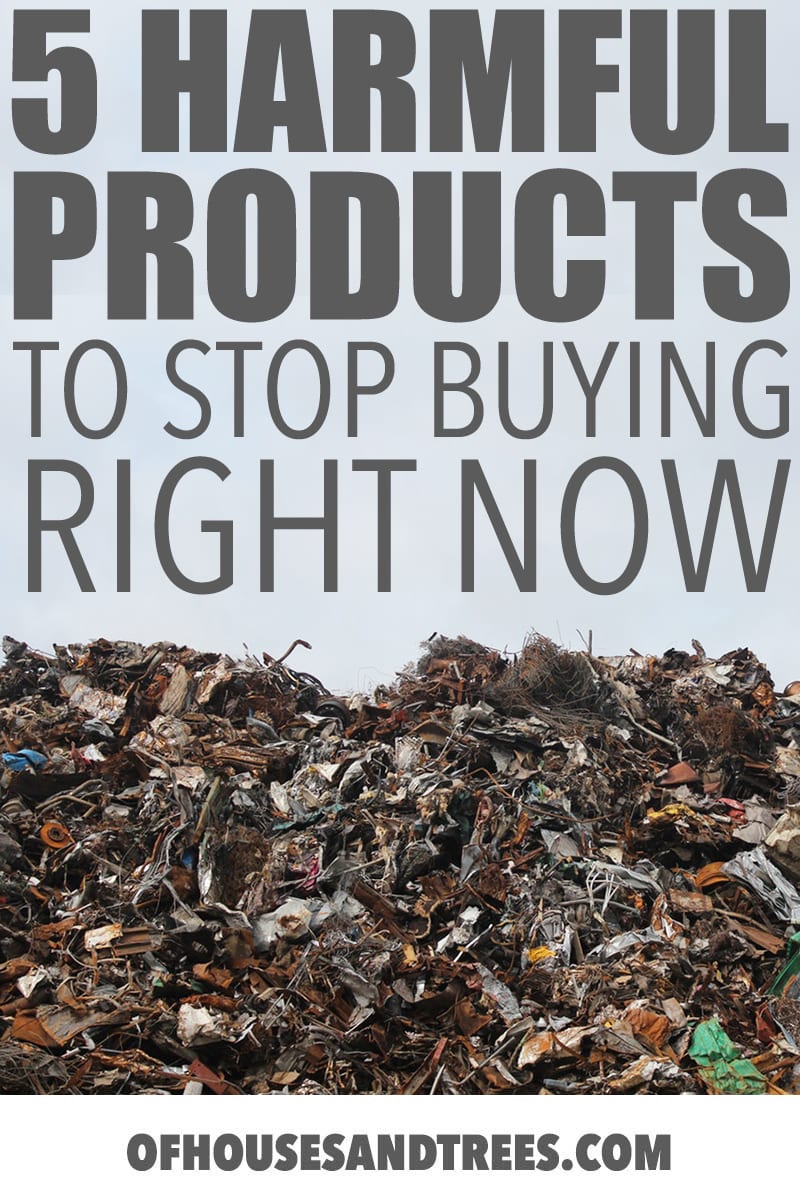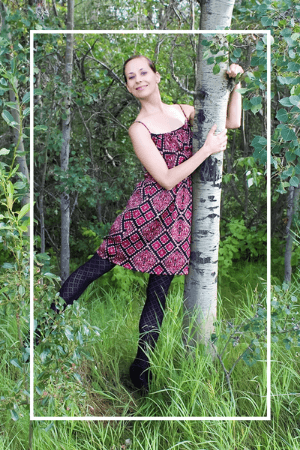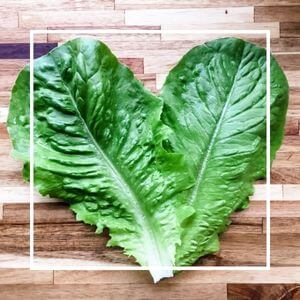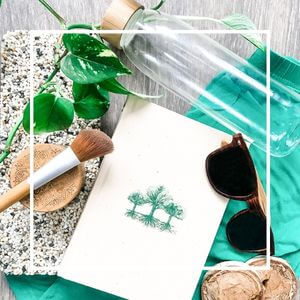These five unsustainable products are harmful to both humans and the environment and aren’t even necessary when there are so many awesome alternatives.
We can all do with a little less stuff, am I right? So, this year, one of my resolutions is to stop buying unsustainable products. These five common items are harmful to both humans and the environment and aren’t even necessary when awesome alternatives are readily available.
These days, there are so many environmentally sustainable products and methods out there, ranging from those used by our grandparents (cleaning with vinegar!) to those we can thank newer advancements in technology for (period panties… for real!).
Here are five harmful, unsustainable products I’m not going to buy this year. Join me in the boycott!
Featured Video
Plastic Bags and Plastic Wrap
Why: I’ve already mentioned ousting plastic baggies and wrap as a way to green your home while saving money, but I’m going to throw down a little bit of info as to why plastic products are so environmentally unfriendly. First off, chemicals added to plastics are harmful to the human body (as well as animals). Much of our plastic waste ends up in the ocean, which disrupts marine life. Plastic buried in landfills leaches chemicals into groundwater. Some of these chemicals have been linked to an increase in heart disease, diabetes and to reproductive issues.
What to use instead: Plastic containers (while still plastic) are a better option than disposable bags and wrap since you at least can reuse them. To avoid plastic entirely, go the class container route or try out the current trend of stainless steel containers. Plus, you can make or buy reusable snack baggies like these (I have the guitar one!). As for plastic wrap, when I make something like a salad to take to an event, instead of covering it with plastic wrap I throw a dish towel on top and tie some twine to hold it in place. Classy. You can also make or buy reusable food wrap out of cotton and beeswax. (And on the subject of plastic – if you’re still using single-use plastic water bottles, did you know you can buy water sold in boxes?)
Paper Towels
Why: Like all paper products, paper towels are made at the expense of trees, energy and water. And much like plastic products, they usually contain chemicals. They also contribute to landfill waste, with 20 to 40 percent of office building waste coming from paper towels. While there are paper towels made from recycled products on the market, studies have shown manufacturing them still produces the same amount of CO2 emissions as regular paper towel.
What to use instead: Ever wonder what you should do with those sweatpants with the hole in the crotch? Or that old flannel shirt that isn’t even fit to sit around the campfire in? Why, cut them up and use them as rags, of course! If you want something a little cuter than raggedy rags, you can either make or buy unpaper towels, which are basically homemade dishtowels you can wrap around a paper towel holder. And there’s always the humble yet noble dish towel or dish cloth at the ready.
Cleaning Supplies
Why: Sodium dichloroisocyanurate dihydrate, 2-butoxyethanol, quaternary ammonium compounds… what the hell do these long, scientific-sounding words mean? Well, in terms us laypeople can understand, they mean the death of fish and other aquatic life and skin, eye, nose, throat and lung irritation for us non-fishy earth-dwellers. They are substances commonly found in cleaning supplies and, oh yeah, some of them have been linked to cancer. You can read more about my thoughts on traditional cleaning supplies here.
What to use instead: Vinegar diluted with water works great for cleaning things like toilets and countertops. If you need something for scrubbing, give baking soda a try. Here’s a recipe for a homemade cleaning scrub (scroll down to the first item on the list). You literally could just sprinkle some baking soda in your tub or sink and go at it with a wet sponge. I also recently switched to using plain ol’ baking soda for laundry detergent and you know what? My clothes come out clean and fresh and I can sleep easy knowing my jammies are chemical-residue free.
Face and Body Wash
Why: Much like cleaning supplies, many personal hygiene products contain additives and chemicals that are harmful to your body and the environment. Sure, you can buy chemical and cruelty-free products – which I’ve done in the past, but then you’re left with multiple bottles and additional packaging to dispose of. (Not to mention the waste created and additional resources used during the making of these products.)
What to use instead: Even if you recycle (and I’m sure you do), you can pretty much eliminate waste all together by using a multi-purpose bar of soap in sustainable product packaging for all your suds-y needs. I even use bar soap in my hair from time to time! You can also make homemade face and body wash out of household items such as coconut milk and liquid castile soap.
Feminine Hygiene Products
Why: Before you start saying “eeewww,” first let me say this – grow up. And second let me say this – nearly 20 billion pads, tampons and applicators end up in North American landfills every year and an average North American woman uses over 11,000 tampons in her lifetime. Companies such as Natracare offer organic pads and tampons that are biodegradable and plastic free, but these products still produce a yearly carbon footprint of 3.4 kg of CO2 for an average woman.
What to use instead: Ever heard of a menstrual cup? If not, it’s exactly what it sounds like. A soft silicone cup that catches menstrual flow, which you then rinse out and use again. Not only are menstrual cups better for the environment, but some women even report that using them has reduced their cycle length, erased cramps and helped balance hormones. Another option is period-proof panties. Already popular in countries such as Asia, women in Canada and the US are just starting to explore the options – and there are a lot of them! According to this website, the best performing leak-proof period panties are Modibodi. They also sell period-proof swimwear!
Making small changes in our day to day life may seem like peanuts in the grand scheme of things, but it’s our greatest power as individual humans. Refraining from buying products that harm the environment (and ourselves!) tells companies we want something different. And, looking at all the alternatives out there these days – it sounds like they’re listening!
Are you willing to give up (or already have given up) any of these unsustainable products? Leave me a comment below and consider sharing this post with all your sustainability-loving friends!
PIN ME!
 Posted on January 14, 2018 (Last Updated on November 17, 2018)
Posted on January 14, 2018 (Last Updated on November 17, 2018)
Former architectural technologist. Current treehugger.
I’m here to help you green your home – and your life.
Subscribe to the Of Houses and Trees monthly newsletter and I’ll send you my FREE list of “The 8 Best Places to Buy Eco-Conscious Decor Online.”
What on earth is sustainable design? Learn all about this eco-focused design method and read the latest posts about green architecture, interior design and decor.
Sustainable living is more than just a thing treehuggers talk about. It’s about making conscious choices everyday. Read the latest posts on living with the planet’s wellbeing always in mind.
Visit the Of Houses and Trees sustainable product directory and support brands trying to make a difference in the world.
Find out more about our 40 acres of land in Parkland County, Alberta and the sustainable home we built amongst the trees.
Need help creating the home of your dreams? Care about the planet? You’ve come to the right place! check out my affordable, sustainable e-design services.
Having a had time choosing paint colours? I’ve got you – and your walls – covered with an interior paint palette sure to compliment your home.
Have questions about creating an eco-conscious home? Go ahead – ask me! Sign up for one of my free online interior design consultations and ask me anything you want.











Thank you Larissa!
This post gave me some new ideas for moving my household toward more sustainable practices. Paper towels is one of my bad habits and you have provided good information for a cure or at least, a reduction.
Have you tried our locally made products by The Whimsical Washing Company?
These are handmade cleaning products. I sent you the FB link.
[email protected]
Yes I saw the FB message – love it! I will definitely have to try some of these products out – especially the toilet bowl cleaning bombs. As for paper towels, I found that if I just stopped buying them then they weren’t around and I had to use something else. Convenient items are only convenient of they’re in your house 😉
Menstrual cups are made of silicone or plastic which are in no way sustainable or healthy options for women. The statement that they reduce cramps are absolutely unfounded and could even compromise women’s health.
Hi Laura – thanks for commenting. Menstrual cups are typically made of medical-grade silicone, which is the same silicone used in implants and have been deemed safe for use within the human body. Silicone is believed to be a more sustainable option in several applications, one of them being menstrual cups and another being bakeware. Silicone is long-lasting and if cared for properly it will take longer before it ends up in a landfill when compared to other products such as plastic or – in the case of tampons – single use materials.
Here are a few articles I used to research this topic:
https://www.intimina.com/blog/medical-grade-silicone/ (about medical-grade silicone and menstrual cup safety)
https://www.realself.com/question/los-angeles-ca-silicone-safe-human-body (about medical-grade silicone and breast implant safety)
https://livegreen.recyclebank.com/column/because-you-asked/what-is-silicone-and-how-green-is-it (silicone and sustainability)
The link in my blog post above reads “some women” have experienced a lessening of cramps and leads to an article with several personal comments stating that using a menstrual cup helped individual women with their cramps. This of course is anecdotal evidence and not a scientific study, which is why I worded the sentence the way I did.
No solution is perfect, but alternatives to traditional waste-producing products such as tampons and pads are important to discuss. And it’s also important to voice your opinion if you disagree, as long as you do so in a thoughtful manner.